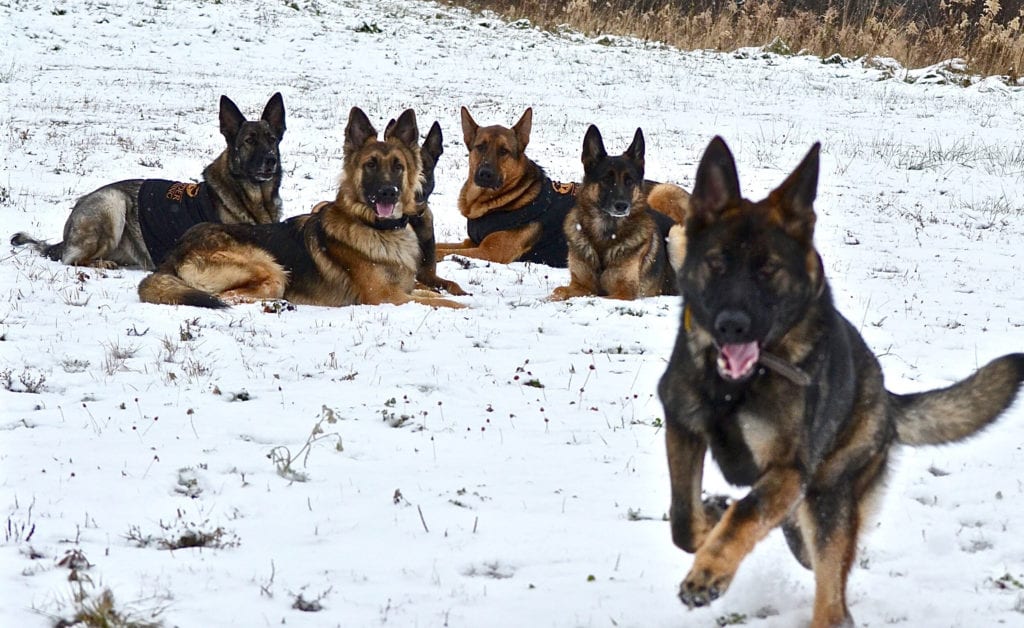Dog Blog - December 6, 2019
5 Ways to Keep Your Dog Safe and Healthy in The Winter
Whether you are lucky enough to have mild winters, or if, like us here in Pittsburgh, you are dealing with snow, ice and below-freezing temperatures, your four-legged friend can be just as affected by winter conditions as you are.
Here are some of the things that we do to ensure our eight dogs stay safe and healthy all winter long.
Get exercise in.
When the temperature drops and the wind kicks up, it can be tempting to hide away at home. However, a dog shut up for days on end is likely to get restless, which could lead to unwanted behaviors. This is particularly true for larger or working breeds that won’t get enough exercise about the house.
Exercise caution in deciding if it’s okay to head out, but try to get walks in when you can. Temperatures are likely to be at their highest around late morning or early afternoon – particularly on sunny days, so aim for those times if possible.
Layer up.
Some breeds have excellent winter coats that can protect them from the elements; others might need a little extra help. Bundle up small and short hair dogs in specially designed coats and sweaters to keep them warm.

Don’t, however, assume that either a natural winter coat or an extra one will protect your pal fully. Keep in mind though that dogs are as susceptible as humans to conditions such as hyperthermia and frostbite, so you may want to limit your time outdoors if it is very cold.
Check their paws.
Winter conditions can be particularly hard on a dog’s paws. You need to be regularly checking them for signs of drying, cracking, or damage. If your dog has hairy feet, trim them often to prevent ice build-up between pads.
You also need to be mindful of salt and other chemicals distributed across city sidewalks. These can be harsh on your friend’s feet and harmful if ingested. This is particularly true of antifreeze – dogs are attracted to the sweet smell and taste, but even a small amount of this can be lethal for them. Ensure that you are wiping your dog’s paws as soon as you get back from your walk to avoid any problems.
Doggy boots can be a good option for protecting delicate feet – if they will wear them. For those that won’t, there are some protective foot creams that might be worth looking into.
Feed them right and keep them hydrated.
While some owners might be tempted to increase their pet’s feed to see them through the cold winter months, they simply may not need the extra calories. Keep in mind that they may not be getting as much exercise during the winter months as in the summer ones, so it might actually be better to reduce their daily intake.
Extra supplements can also be added to their food at this time to protect their coat and skin from the drying effects of cold, wind, and central heating. If you are unsure about your dog’s specific needs, seek expert advice.
One thing is for sure, though – you must take care that your pooch remains sufficiently hydrated. Dogs can suffer from dehydration because of the dry air in the house. Provide your furry friend with constant access to fresh, clean water.
Cozy up.
Finally, your furry friend needs a nice cozy place to sleep at night or while you’re away at work. Ensure that your pet’s bed is situated away from any drafts and, if possible, elevated off cold, hard surfaces. Add extra blankets for warmth, and with elderly dogs, you may want to consider adding a heat pad or disk to help with stiff joints. Avoid hot water bottles, though, as dogs may be tempted to chew on these.

